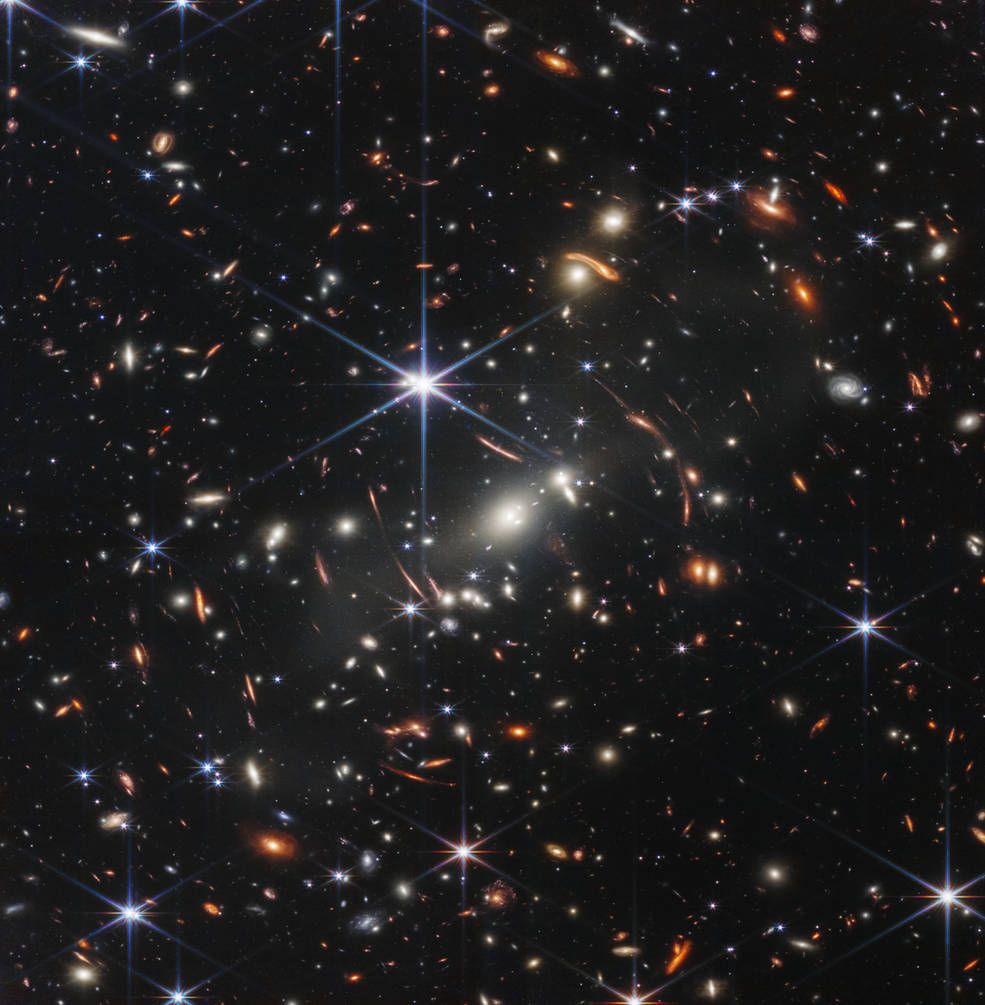NASA's James Webb Space Telescope — the most powerful observatory ever launched — represents not only a scientific paradigm shift but a cultural one.
Why it matters: Large telescopes like JWST and the Hubble Space Telescope take on lives and personalities of their own, influencing how the public views its place in the universe.
- "It's a powerful tool that will study the intimate details of how galaxies are formed and how planets build their atmospheres," astronomer Caitlin Casey, of the University of Texas at Austin, tells Axios. "But beyond that, it is the ultimate way that humans can come into touch with the universe that we live in."
Driving the news: On Monday, President Biden unveiled the first full-color scientific image from JWST, showing off one of the deepest images yet taken of the universe.
- "Now we enter a new phase of scientific discovery," Vice President Kamala Harris said during the unveiling. "Building on the legacy of Hubble, the James Webb Space Telescope allows us to see deeper into space than ever before and in stunning clarity. It will enhance what we know about the origins of our universe, our solar system and possibly life itself."
- NASA is planning to release the full set of JWST's first images on Tuesday at 10:30 a.m. ET. Those photos are expected to include a view of the Carina nebula, a giant planet's atmosphere, a planetary nebula and a galaxy cluster.

How it works: The JWST is designed to stare deeply into the universe in infrared light, cutting through dust to see exactly how stars form and what the earliest galaxies looked like.
- That will give scientists and the public a window into a greater understanding of how our universe evolved.
- "It can observe things that are effectively 100 times fainter than Hubble," Casey says. Those observations are expected to give everyone — not just scientists — a deeper understanding of our place in the cosmos.
Yes, but: It takes a lot of time, money and collective effort to get a large space telescope to orbit. Before launch, the JWST was billions of dollars over budget and took decades longer to develop than initially expected. Controversy around the high-profile telescope's namesake has also erupted in the last couple years.
- Some in the astronomy community have suggested that these projects eat up too much budget, time and attention.
- Instead, those scientists suggest that NASA and others should fund smaller missions that are still productive, but perhaps less all-encompassing to keep the field moving forward more quickly.
- But others say that would sacrifice the inspiration and scientific ambition brought about by funding and using these expensive telescopes.
- "There's this possibility for science to kind of meander — one neat discovery after another, but no real quantum leap as it were. And that's just because there's a limitation in the technology. So, with a flagship mission like Webb, you really have the technology behind you to push forward," says Danny Milisavljevic, a Purdue astronomer working with JWST.
Flashback: The Hubble helped push astronomy forward in much of the same way people expect the JWST to do. It also brought the universe to the public in an accessible way — through beautiful photos.
- "It made the universe more friendly and intimate and exciting for everyday people," Ray Villard, the news chief for the Hubble Space Telescope, tells Axios.
- It also showed the public that the universe is a dynamic, evolving place, he adds.
The big picture: The JWST's ability to push the field forward has been directly informed by Hubble's science.
- While Hubble is limited in its ability to see the earliest generation of galaxies, the JWST is expected to fill in that gap in the early universe, revealing what Hubble can't.
- But even that wouldn't be possible without Hubble, which through its deep field revealed the extreme diversity of galaxies hidden in a seemingly empty patch of sky.
The bottom line: Through JWST "we are going to be seeing the faintest specks of light that have ever been recorded in human history," Casey says. "They carry a lot of meaning. They tell us how big our cosmos is — and relatively speaking — how insignificant we are in the cosmos."







